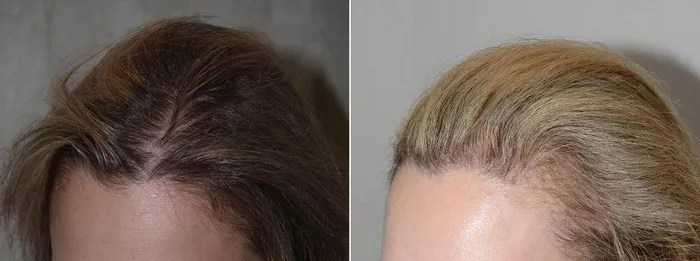If you’re considering a hair transplant, one of the most crucial factors to understand is the number of hairs you’ll need to transplant to achieve your desired results. Hair transplants have become increasingly popular in recent years, offering a permanent solution to hair loss. However, to ensure a successful outcome, it’s essential to determine the right quantity of hairs for your specific needs. In this article, we’ll delve deep into the question of how many hairs you need to be transplanted and provide you with valuable insights to make an informed decision.
Assessing Your Hair Loss
Before we can determine the number of hairs needed for a hair transplant, it’s imperative to assess the extent of your hair loss. Different individuals experience varying degrees of hair loss, ranging from minor receding hairlines to more advanced balding patterns. To assess your hair loss accurately:
1. Hairline Evaluation: Examine the degree of recession in your hairline. Is it a mild receding hairline or a more pronounced one?
2. Balding Area: Identify the areas on your scalp where hair loss is most prominent. Is it the crown, the frontal region, or a combination of both?
3. Donor Hair Quality: Assess the density and quality of the hair in your donor area, typically at the back of your head. This area provides the hair follicles for transplantation.
Understanding Hair Grafts and Follicular Units
In the context of hair transplantation, hair is typically transplanted in the form of grafts, which consist of one or more follicular units. A follicular unit typically contains one to four hairs. Understanding this concept is vital because it directly impacts the calculation of how many hairs you need:
1. Single-Hair Grafts: These are suitable for creating a natural-looking hairline.
2. Multi-Hair Grafts: These are used to add density and volume to the transplanted area.
Calculating the Number of Grafts
Now that you have assessed your hair loss and understand the concept of grafts, let’s calculate the number of grafts required for your hair transplant. Generally, a good rule of thumb is to consider:
1. Mild Hair Loss: For those with minor hair loss, 800-1,000 grafts (equivalent to 1,500-2,000 hairs) may suffice to create a natural-looking result.
2. Moderate Hair Loss: Individuals with moderate hair loss may require 1,500-2,500 grafts (around 3,000-5,000 hairs) to achieve satisfying coverage.
3 .Advanced Hair Loss: Those with advanced hair loss or extensive balding patterns might need 2,500-3,500 grafts (approximately 6,000-8,000 hairs) or more to achieve a fuller appearance.
Consultation with a Hair Restoration Specialist
Determining the exact number of grafts and hairs needed for your hair transplant should always be done in consultation with a qualified hair restoration specialist. During your consultation, the specialist will consider various factors, including:
1. Your Aesthetic Goals: Discuss your desired hairline shape, density, and overall look.
2. Donor Area Capacity: Assess the availability of healthy hair follicles in your donor area.
3. Hair Characteristics: Consider the thickness, texture, and color of your hair.
4. Budget: Determine a realistic budget for your hair transplant, as the cost is often calculated based on the number of grafts.
Achieving Natural-Looking Results
One of the key factors in achieving a successful hair transplant is ensuring that the results appear natural. This involves strategic placement of grafts, mimicking the natural hair growth pattern, and considering the angles at which the hairs emerge from the scalp.
1. Recipient Site Design: A skilled surgeon will design the recipient site (the area where grafts will be transplanted) with an eye for naturalness, creating a hairline that complements your facial features.
2. Density and Distribution: The distribution of grafts should be carefully planned to achieve the desired density without making the transplanted area appear too dense or sparse.
Post-Transplant Care and Maintenance
After your hair transplant, it’s crucial to follow proper post-operative care and maintenance instructions provided by your surgeon. This includes:
1. Medication: Using prescribed medications to prevent infection and promote hair growth.
2. Avoiding Trauma: Avoiding activities that could damage the transplanted grafts during the initial healing phase.
3. Patience: Understanding that it takes time for the transplanted hair to grow and achieve its final appearance.
See Also: 5 Stages After Hair Transplantation: Hair Gradually Grows
In conclusion
The number of hairs you need to be transplanted depends on your individual hair loss pattern, goals, and the expertise of your chosen hair restoration specialist. By carefully assessing your hair loss, understanding grafts and follicular units, and consulting with a professional, you can make an informed decision to achieve natural and satisfying results in your hair transplant journey. Remember, a successful hair transplant not only restores your hair but also boosts your confidence and self-esteem.


